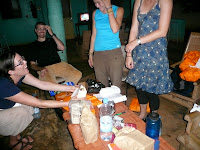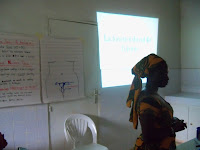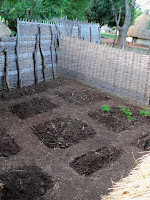Back in August my amazing grandmother (with lots of support
from my equally amazing mother and family) decided to celebrate her birthday by
hosting a lovely tea party to benefit the latrine-building project I’d
proposed. She called it a Privy Party and it was a resounding success. She
raised so much money that I was able to expand the project, increasing the
number of latrines that we’ll be able to build.
 |
| I can only hope that the latrines will turn out as well as the tea party did ~ |
My community here is very excited about this project, and I’m
eager to start building, but there are still a few weeks left until the rainy
season is definitively over and building can begin. I’ll be doing my best to
make the most of this time to increase awareness of the importance of latrines
and of how to go about getting involved with the project - each participating
family will provide a contribution, learn about disease prevention and latrine
use and maintenance, and assist with the construction of their latrine. It’s
not a hard sell; people around here are generally really enthusiastic about
latrine use. Some compounds already have latrines, but they’re often used by a
large number of people, leading to the latrine prematurely filling up and breaking
down. Many other houses have no latrine
at all, and so people resort to practicing outdoor defecation (a fancy way to
say pooping off in the bushes or out in the fields) or settle for using a
neighbor’s latrine when they can, which is fine but tends to exacerbate the
overuse problem.
I really can’t do enough to thank all the people who contributed to this project – especially my family – but I will do my best to post updates as the project progresses and to (eventually!) send out thank-you cards. It’s been really moving to see how engaged and motivated people are to help other people improve their communities.

















.jpg)













































